How to clean a washing machine drain hose
 A person can no longer imagine existing without everyday helpers, such as a vacuum cleaner, dishwasher, and washing machine. Household chores are carried out with the usual pressing of buttons.
A person can no longer imagine existing without everyday helpers, such as a vacuum cleaner, dishwasher, and washing machine. Household chores are carried out with the usual pressing of buttons.
The failure of household appliances can darken your life and ruin your mood for a long time. What to do if the reason the washing machine breaks down is a clogged drain hose?
The content of the article
Cleaning the drain hose
In this situation, you have two solutions: call the service center, call a technician, or try to fix the problem yourself. You will have to wait a long time for help from a technician, and the laundry will accumulate. Cleaning the washing machine hose yourself is not such a difficult task.
Blockage
A blockage is the formation of obstacles in the form of stuck debris on one of the sections of the drain hose.
At home, you encounter two types of blockages:
Mechanical: Small objects (from hooks to buttons and coins) enter the filtration system.
 Natural: The smallest particles of clothing, lint, fluff, cotton wool, and hair in the hose gradually accumulate in the drainage system, which leads to blockage.
Natural: The smallest particles of clothing, lint, fluff, cotton wool, and hair in the hose gradually accumulate in the drainage system, which leads to blockage.
The clog is blocking the drain.As a result, the machine refuses to obey software commands.
Signs of a clogged drain pipe
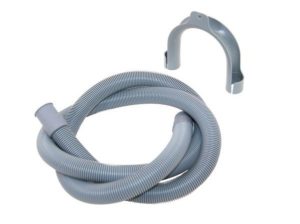 Software failure: the lights on the control panel begin to flash feverishly; the speed of draining the water sharply weakens, while the machine makes a loud noise; the touch panel goes out, the machine turns off; the electronics turns off the washing machine when you try to drain the water or switch to the “spin” or “rinse” mode.
Software failure: the lights on the control panel begin to flash feverishly; the speed of draining the water sharply weakens, while the machine makes a loud noise; the touch panel goes out, the machine turns off; the electronics turns off the washing machine when you try to drain the water or switch to the “spin” or “rinse” mode.
To fix the problem yourself, you need to familiarize yourself with the design of the drain system of your model. To do this, carefully read the instructions included with the machine upon purchase. Study the design features of your equipment.
It is important to know, that in some models (Ariston, Indesit, LG, Samsung) access to the drainage hose is through the bottom panel. Therefore, to access the mechanism, the unit is laid on its side.
The principle of operation of the washing machine drainage system
Before the final drainage, the water first enters a special corrugated pipe (storage) connected to a cleaning filter. The filter “catches” the smallest particles of dirt and objects.
After passing through the filter, the water enters the impeller. The liquid then leaves the washing machine. As a result, the pressure created by the rotation of the impeller enters the sewer through a flexible tube.
A blockage can form on any part of this path.
Start with the simplest steps
 Unscrew the filter installed on the machine. In most models it is located at the very bottom of the front panel. Check for objects that have fallen into it. If the filter is clean, then you should check the drain hose.
Unscrew the filter installed on the machine. In most models it is located at the very bottom of the front panel. Check for objects that have fallen into it. If the filter is clean, then you should check the drain hose.
In this case, there are two options for resolving the problem:
- without disconnecting the drain tube;
- with disconnecting the drain hose, disassembling it, and washing the drain system.
If there is a suspicion that small fibers, hair, or lint have accumulated in the drain hose, it should be cleaned without disconnecting it from the unit. The main task is to dissolve this accumulated debris. Special solutions, powders, tablets purchased at a hardware store will help. Tell the sales consultant about the problem, he will quickly select the right remedy.
Some prefer the banal method - use baking soda or soda ash.
The recipe is simple but effective:
- It is recommended to take 200 grams of baking soda powder. Pour into drum. The washing machine is set to wash mode (without laundry), the temperature is set to 90 degrees.
- Heated water together with baking soda forms an alkaline solution. The high temperature of the solution instantly removes dirt stuck inside the drain hose.
How to clean a drain hose by disassembling the drainage system
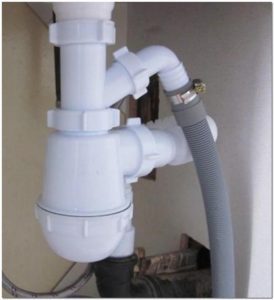 If cleaning the tube without disassembling does not produce results, then proceed to disassembling the drain system.
If cleaning the tube without disassembling does not produce results, then proceed to disassembling the drain system.
You should act in strict sequence, strictly following safety precautions:
- Disassembly of the unit is carried out only after disconnecting the device from the network.
- Turn off the water supply tap to the machine.
- Remove the drain pipe from the sewer hole.
- Lay the unit on its side with towels underneath.
To work you will need a minimum set of tools:
- a thin brush on a strong rope,
- pliers,
- screwdrivers.
Algorithm for disassembling drainage parts:
- remove the bottom panel;
- unscrew the filter mounting bolts;
- press the clamp
- using pliers;
- release the drainage
- pump hose;
- remove the hose from the housing.
Attention! If the washing machine is loaded vertically, the drain hose is removed not through the bottom panel, but through the side panel!
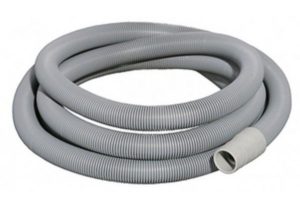 All that remains is to clean the removed tube. First, carefully inspect it for damage, cracks, or defects. Insert a small brush on a Kevlar line into the hose. Using a back and forth motion, clean the hose first on one side and then on the other. When you have finished cleaning the hose, rinse it thoroughly with warm running water.
All that remains is to clean the removed tube. First, carefully inspect it for damage, cracks, or defects. Insert a small brush on a Kevlar line into the hose. Using a back and forth motion, clean the hose first on one side and then on the other. When you have finished cleaning the hose, rinse it thoroughly with warm running water.
If there are still contaminants inside, soak the tube for an hour or two in a warm solution of citric acid.
At the end of cleaning, the drain hose is installed in its original place. All operations for assembling the structure are performed in reverse order.
The washing machine is assembled, do a test wash. Start the washing process without laundry. To enhance the cleaning effect, add your choice to the drum:
- antiscale;
- citric acid.
Set the machine to maximum heat. This method will perfectly clean your household appliance of scale.
What needs to be done to prevent the problem from occurring again
Remember these simple rules:
- Check the drain filter regularly (once a quarter)located on the front panel of the machine. It unscrews easily counterclockwise. Rinse with a brush under running water. Put it in place.
- Before putting things in the machine, check the pockets. Remove any discovered items from them.
- When putting things in the drum, fasten the clothes with buttons and zippers. Turn things inside out.
- When using detergents, follow the recommendations of the equipment manufacturer.
- Use only powders designed for automatic washing.
- When washing delicate fabrics, do not neglect special mesh bags. Soften water using products recommended by the manufacturer.
- Descale your washing machine from time to time.
- Install another filter on the pipe through which tap water enters the device. Clean your washing machine drain system regularly.
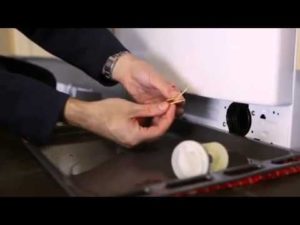 Servicing the machine yourself does not take much time. In this case, additional invaluable experience is gained. You got rid of an unexpected breakdown yourself. You can give technical advice to friends and acquaintances.
Servicing the machine yourself does not take much time. In this case, additional invaluable experience is gained. You got rid of an unexpected breakdown yourself. You can give technical advice to friends and acquaintances.
It is important to remember the basic algorithm of actions if a blockage is suspected:
- filter check;
- cleaning the drain hose by dissolving debris stuck in it;
- dismantling the drainage system.
If there is a blockage, it will be eliminated using one of the above methods.


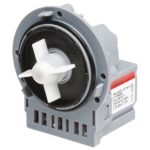
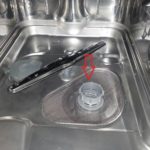


Very useful article! Thank you!